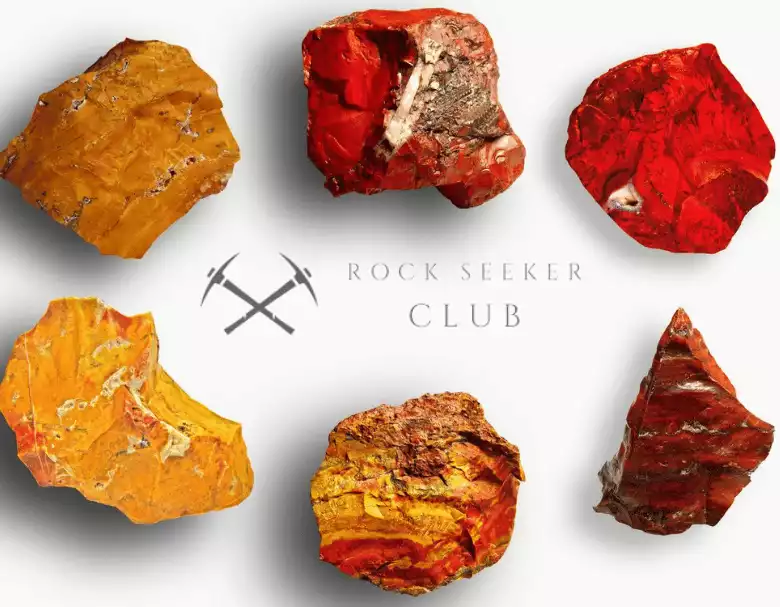Whether it’s royal or sky, blue holds a special place in many of our hearts. The shining color of past splendor can be found in a huge variety of different gems, rocks, and minerals. These range from humble and little known, like Shattuckite, to some of the most famous gemstones of all time such as lapis lazuli and sapphire.
Blue Rocks and Minerals
1. Apatite
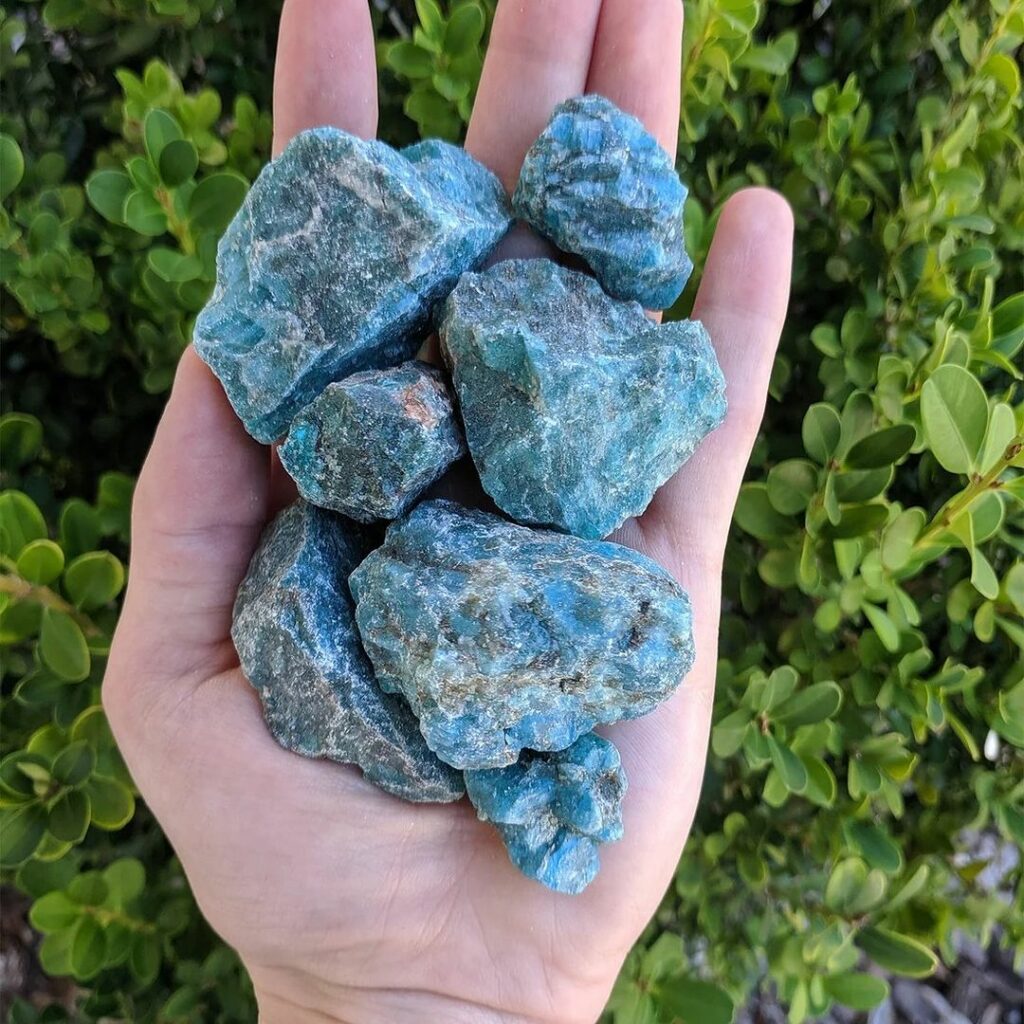
Apatite, a soft but gorgeous gemstone, has been prized for some time. The stone itself is strange in that specimen collectors and gem collectors will have entirely different visions in their heads, one side picturing a deep, royal blue form in massive crystals and the other picturing the electric blue-green of the Neon Apatite which is most often faceted.
There are actually three variations of apatite, with their own structures. The most commonly seen is fluorapatite, but there are also hydroxylapatite and chloroapatite. Both of the latter are quite rare in nature, particularly the latter.
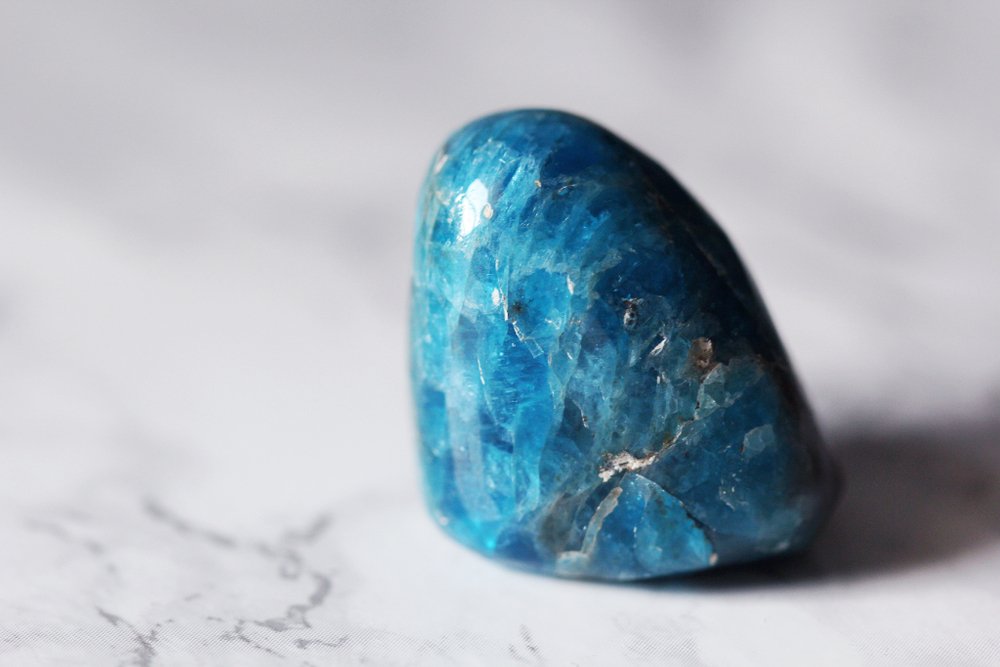
Apatite is usually found in collections, the lower hardness of 5 means it has to be specially protected in jewelry. Still, it’s a fast favorite among both collectors and art jewelers, and the wide variety of blue tones available just cements it further.
2. Sodalite
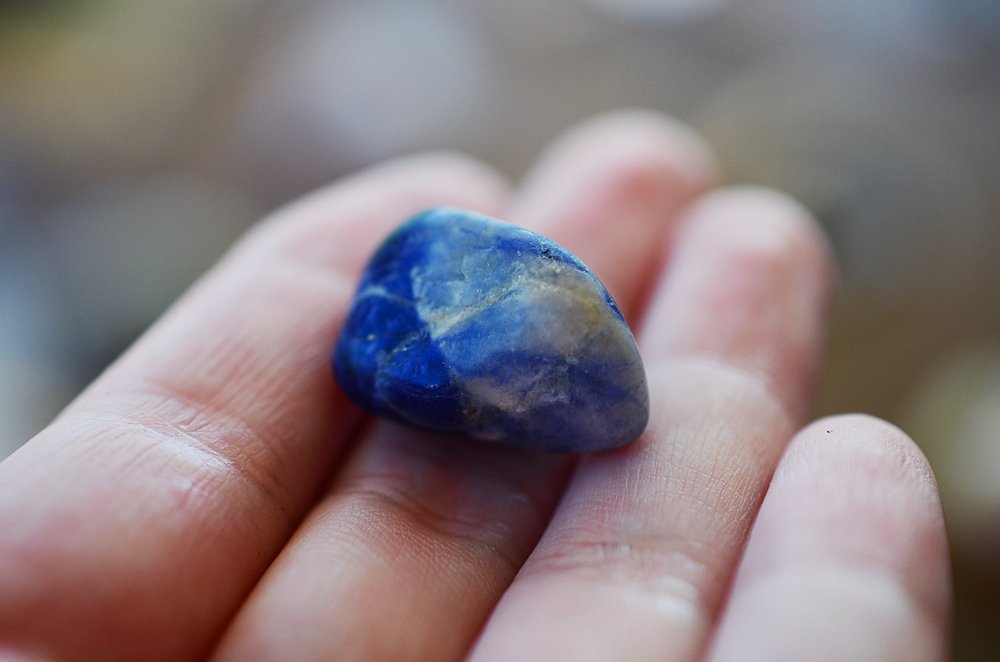
A silica-based rock with deep blue coloration, sodalite is a fast favorite among those who collect and work with decorative stones. It’s often mixed with calcite, forming a stone that is remarkably similar in appearance to lapis lazuli.
It occurs in large masses, making it ideal for making things like vases or sculptures, which keeps the commercial interest up as it’s not exactly in high demand for jewelry. It’s a relatively new discovery, with high-grade material only showing up within the last 200 years or so.
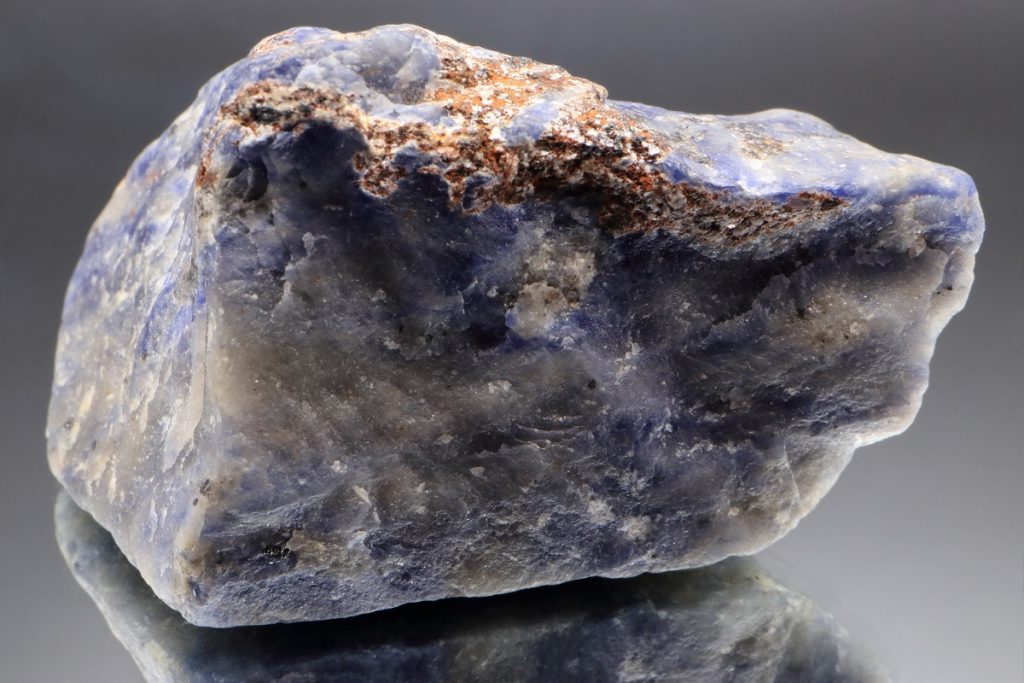
Sodalite tends to be a royal blue coloration, or even a lighter shade, as opposed to the ultramarine that’s associated with lapis. It’s an interesting mineral, easily found in whatever form you’d like, and it’s definitely earned its association with the color blue.
3. Lapis Lazuli
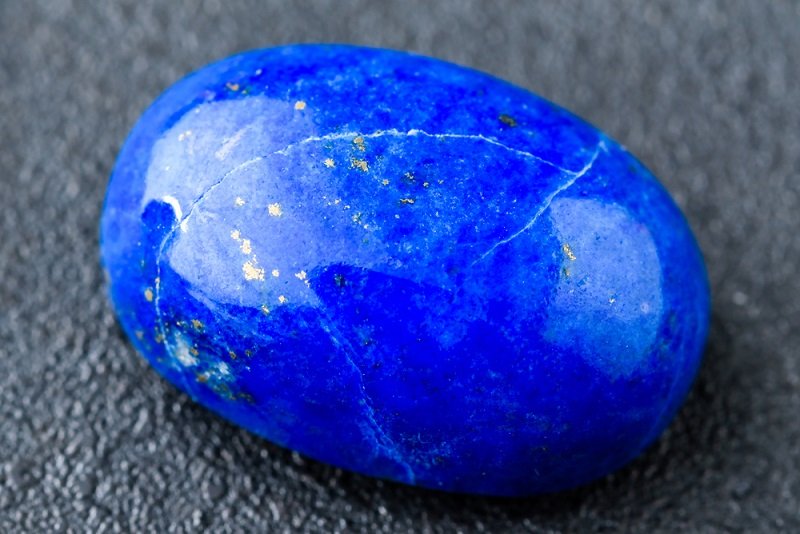
There are, perhaps, three ultra-famous blue stones. Lapis is the longest-running of them, being found in ancient artifacts that are millennia-old. It was highly prized among the ancient Egyptians as an inlay material, a precious stone in its own right, and even as a dye or paint. The stone mainly hails from the Middle East, with particularly high-grade deposits coming out of Afghanistan.
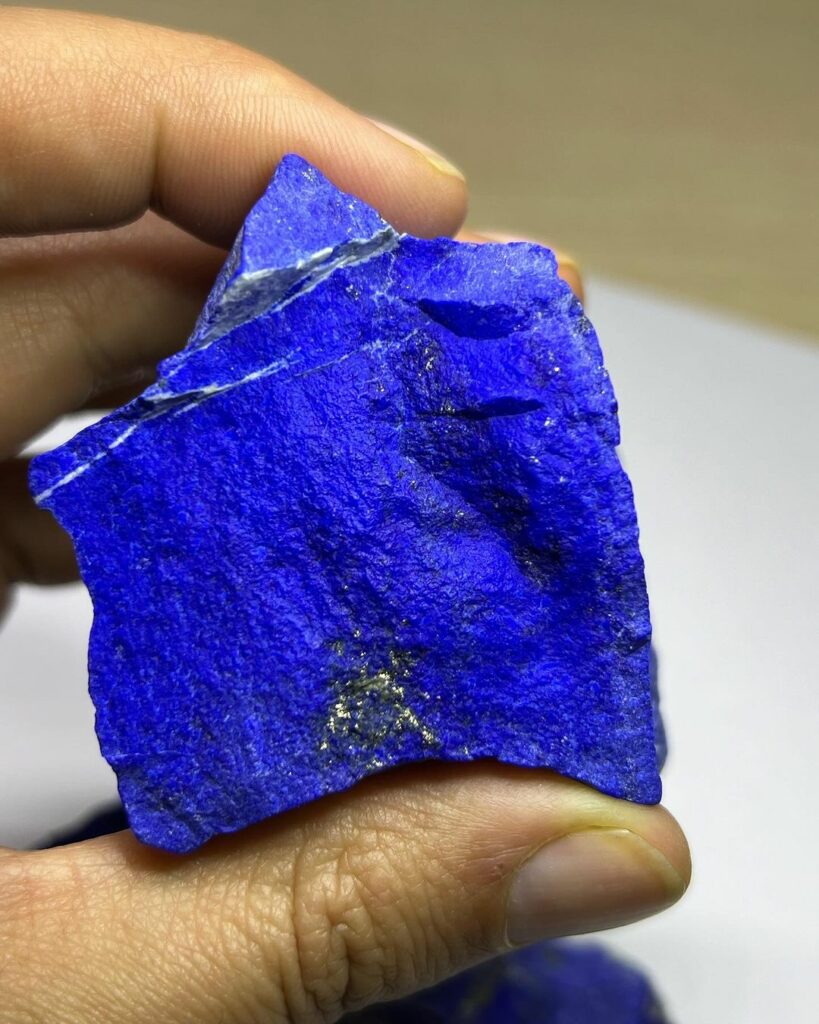
Lapis is actually a rock rather than a pure mineral. It’s a complex conglomerate of white calcite, combined with the ultramarine lazurite and flecks of pyrite in many cases. The whole stone is complex, which leads to the rather stark contrast between crumbly, low-grade material and high-end lapis lazuli which is very solid and almost entirely the rich blue the material is known for.
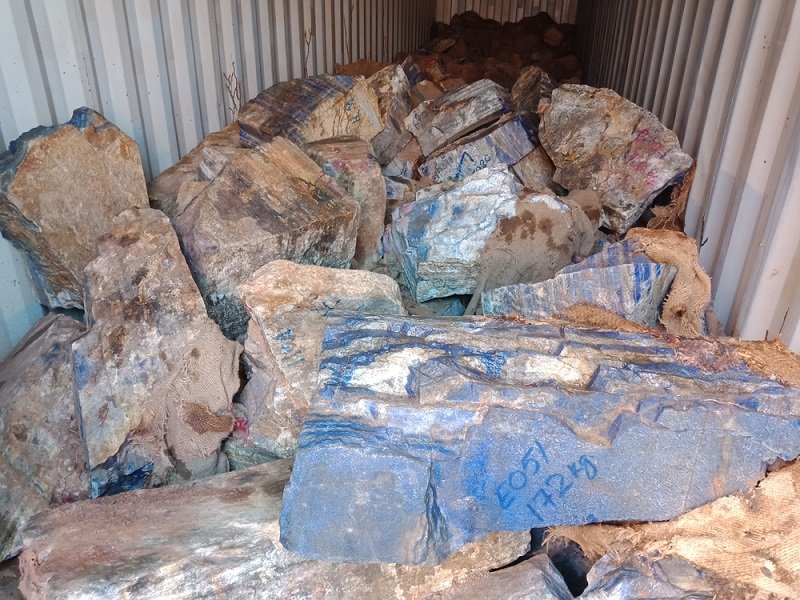
Lapis’ provenance and beauty have kept it in close association with humanity for a long time. It’s been used in most types of artwork at one time or another and it continues to be used to this day, while still hailing from the regions where it was originally discovered. Lapis is a lot more complex than it appears at first glance, but it’s well worth gaining knowledge about it.
4. Topaz
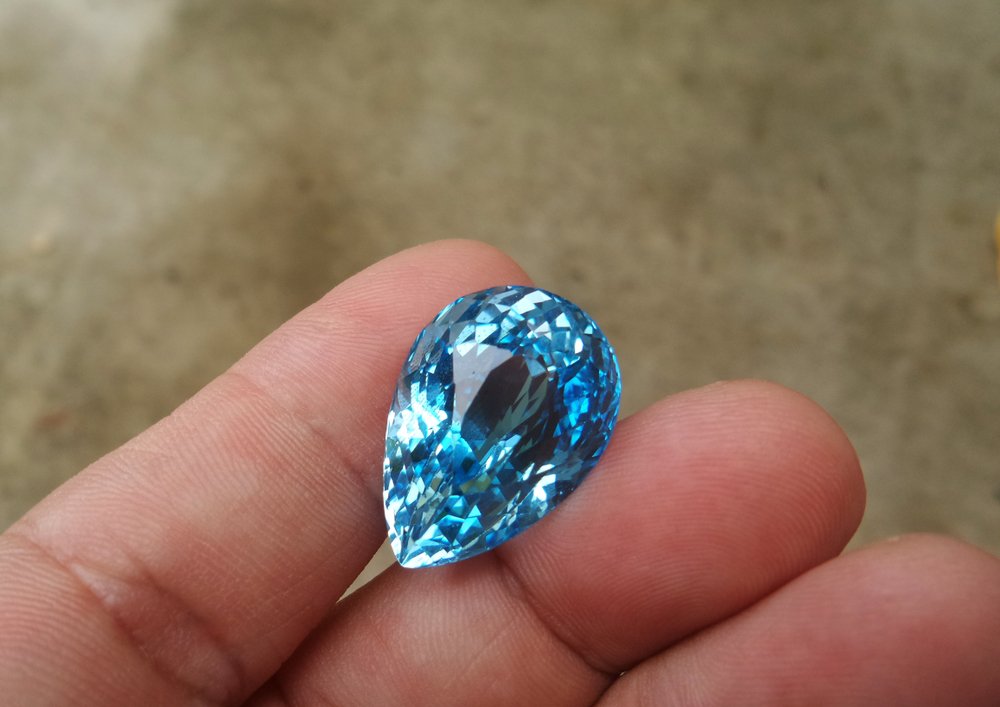
Topaz has undergone a bit of a shift in the last few decades. Previously, the stone was primarily known for clear and yellow-to-brown gemstones which is how it’s been used historically. These days, the most common variety found is blue topaz, which is a sky-to-deep blue gemstone with high clarity.
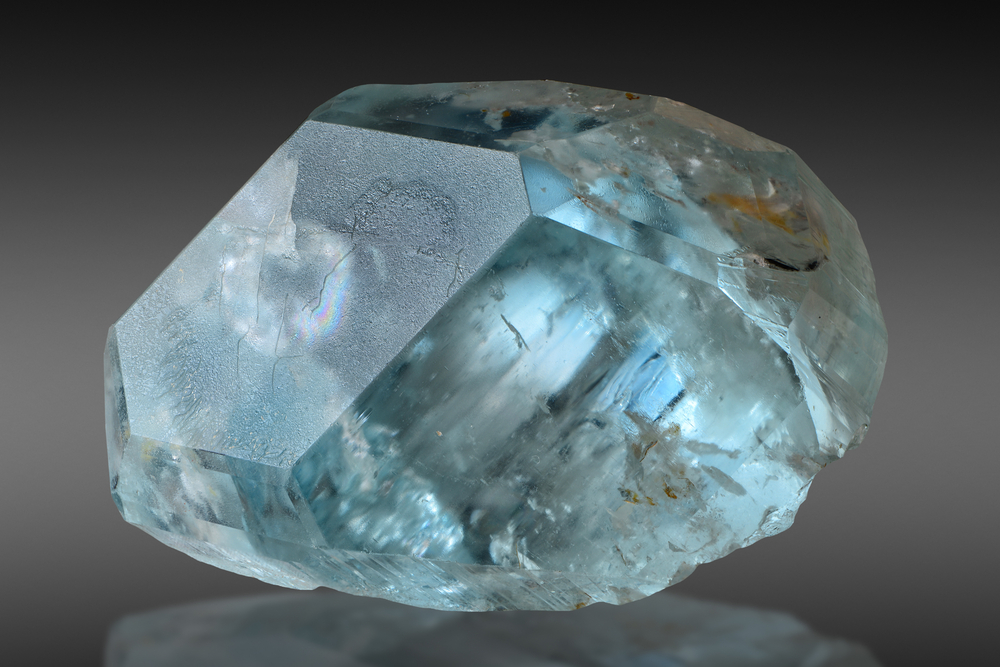
The reason for this isn’t the sudden discovery of blue topaz deposits but instead comes from its treatment. Most topaz is clear or yellowish, but when exposed to radiation the color centers of the crystal are altered. This leaves you with a blue or brown stone, the brown stones can be further altered with heat leaving a cool blue color.
While not always natural, blue topaz is a low-priced stone suitable for rings and other fragile jewelry due to its superior hardness. It’s doubtful that it’s going anywhere, especially with the emergence of some of the more purified color strains such as the deep grey-blue of London Topaz or the more electric Swiss Blue. While usually altered, these stones remain a favorite!
5. Turquoise
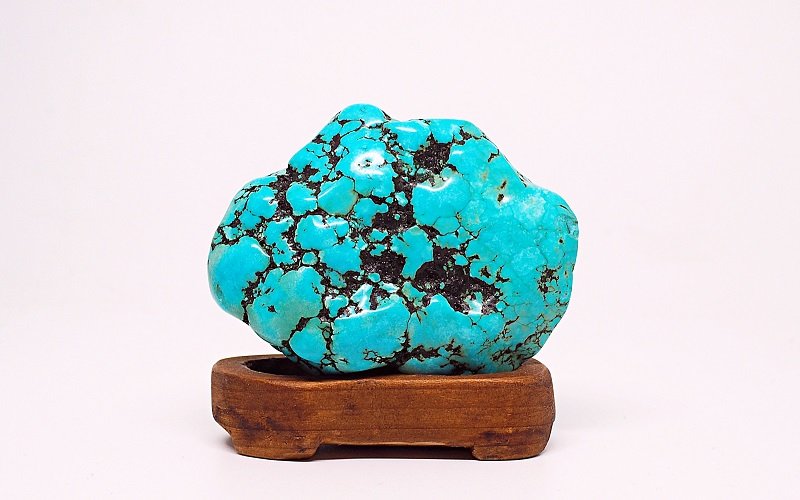
Turquoise has been known since antiquity, but its association is mainly with the American West and the various Native American tribes who picked up silversmithing. The uniquely southwestern look of jewelry often relies heavily on this simple stone. With many of the older stocks being pretty much mined out at this point, its value is only increasing.
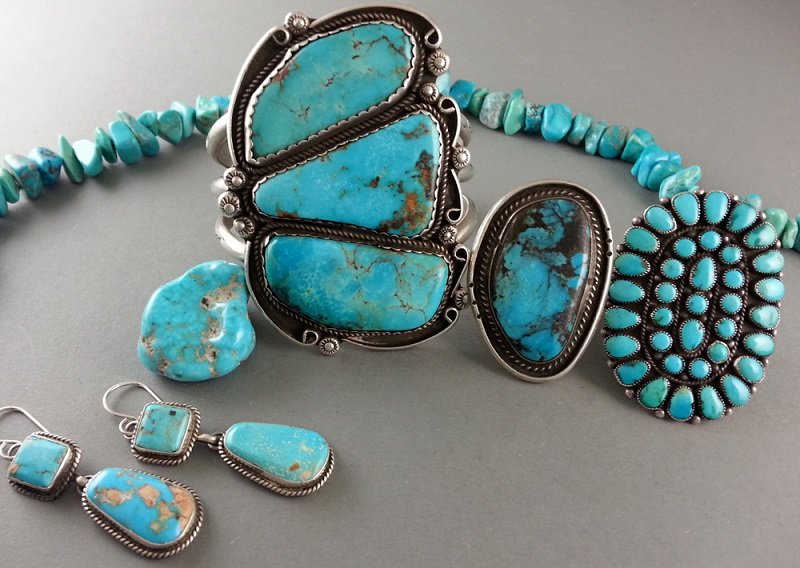
Turquoise itself is a light-blue stone with a highly variable hardness. The stone ranges from chalky to very hard and solid, and the color range goes through an incredible range of different blue, cyan, and teal colors. Turquoise needs a little bit of know-how to purchase without risk since the stone is often altered or faked.
If you can avoid the pitfalls of buying, however, turquoise is a valuable and beautiful gemstone. Its place in American culture is special, owing to the early silversmiths in the country, and it’s not going anywhere.
6. Kyanite
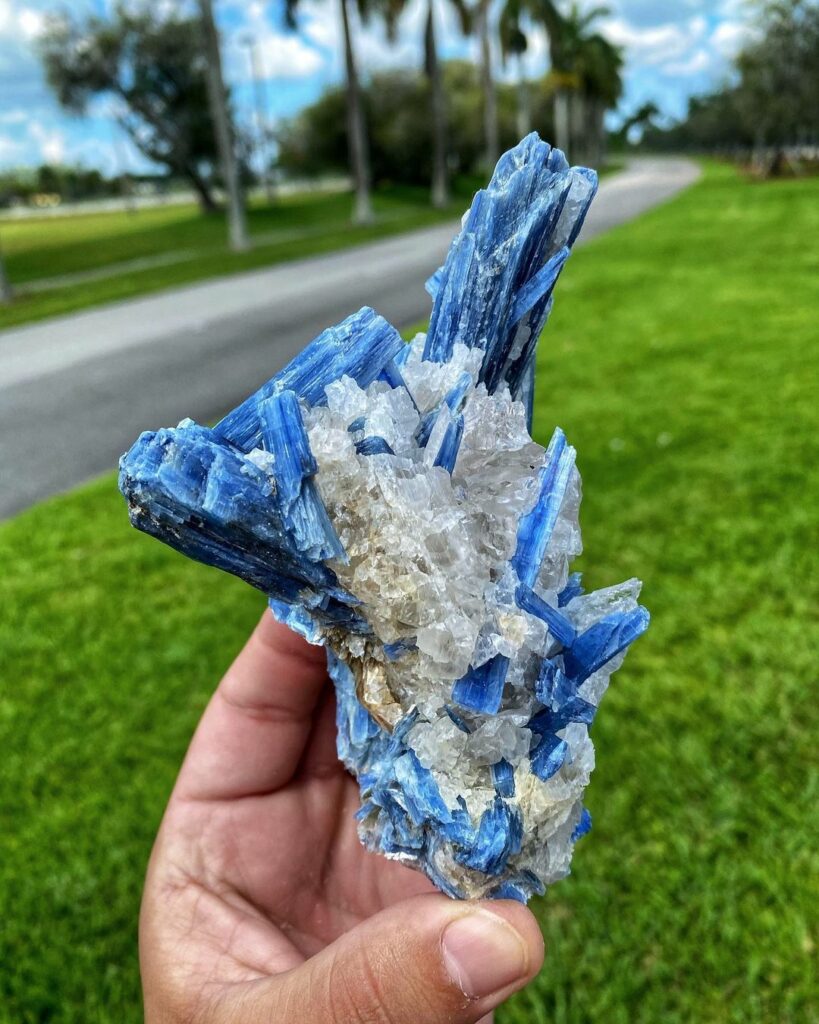
Kyanite is one of the weirder minerals out there. Its defining feature is that the hardness of the mineral varies depending on the angle you approach it compared to the angle of the crystal’s growth. It’s usually known as large, bladed crystals but it can also be found as small individual crystals of deep blue color. These latter crystals are columnar.
Kyanite’s name draws from the Greek word for cyan, kyanos. Kyanite is only one of three forms of Al2SiO5 and indicates high pressure and temperatures where it was found. It’s often used by geologists as a marker to determine the previous conditions of zones with metamorphic rock emerging.
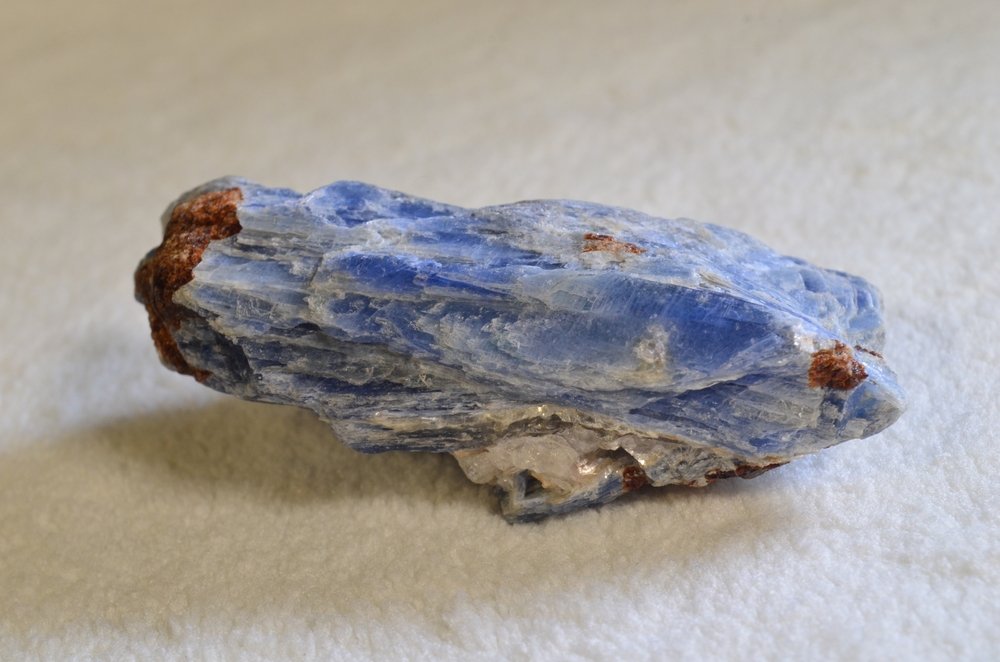
Kyanite is also used as a gemstone on rare occasions. It’s unique crystalline structure and relative fragility mean that it has to be protected but it has a unique, deep blue color with striations of crystals adding to the overall effect. It’s also used extensively in commercial chemical processes. Kyanite isn’t just blue and beautiful… it’s an incredibly versatile mineral!
7. Sapphire
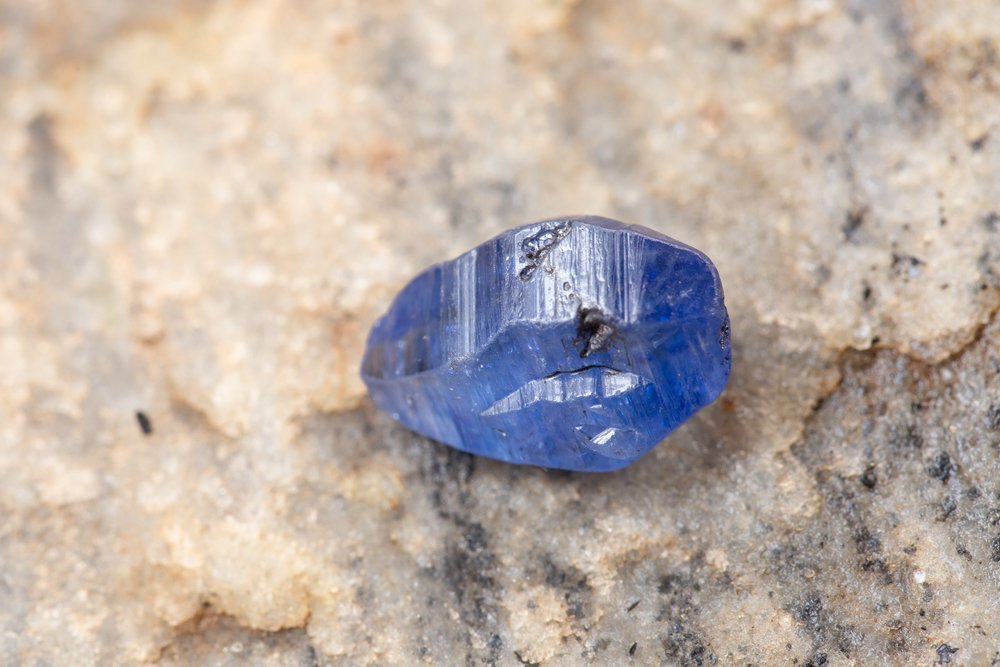
Sapphire is, without a doubt, the most famous of the blue gemstones spread across the globe. Sapphire is used as a descriptor of all types of corundum that aren’t red, but its name has become just as associated with blue as other classic gemstones are with their dominant colors. Sapphire’s incredible hardness and deep beauty have made it a favorite for jewelry for much of human history.
Sapphire is usually cut into faceted gemstones, but less high-quality specimens are usually cut into cabochons. In addition, asterism can be produced in these stones through the inclusion of rutile. Cut properly en cabochon, these rutile needles can create the illusion of a floating star on the surface of the stone.
Sapphires are found across the world, with some of the best even coming out of Montana. While the blue color is the one most of us have locked into our sights, there’s a startling variety of different colors out there and even parti-color gems cut from multiple color zones. Expensive and timeless, the truth is that these rich stones have lent their name to shape our very perception of blue.
8. Azurite
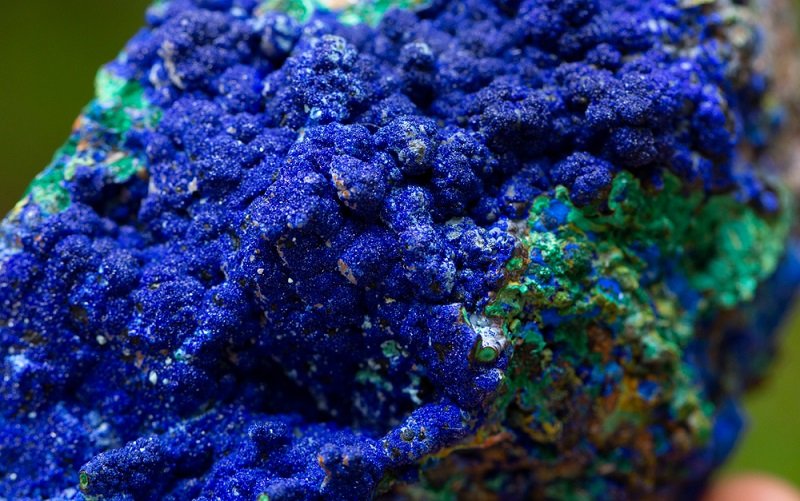
A simple copper carbonate mineral, often associated with malachite, Azurite is a striking blue that’s hard to miss. It actually hails from the same regions as lapis lazuli in many cases, completing its association with deserts and wide-open skies. It’s been used as a pigment, cut into cabochons for jewelry, and it’s an important marker of copper deposits for those doing geological surveys.
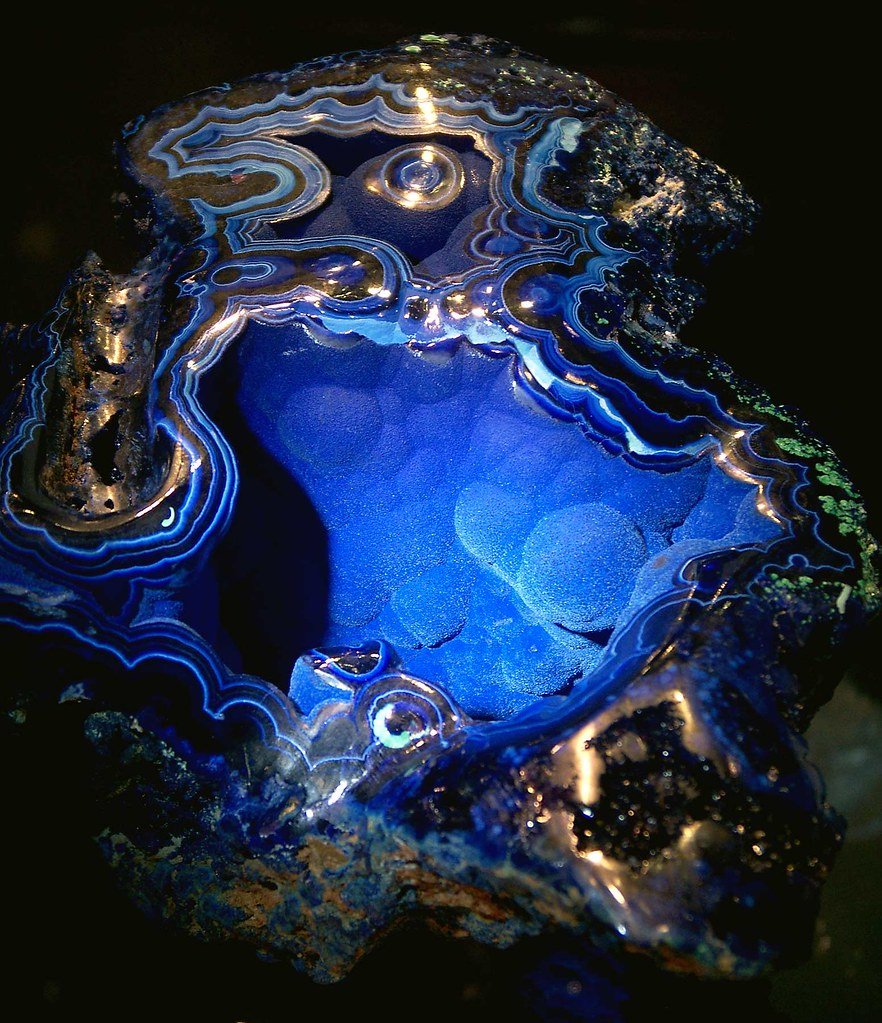
photo: cobalt123
Azurite is a bit soft, and most of it is collected in a natural form. Other times it co-occurs with malachite, creating amazing gemstones whether they’re cut and polished or just left as specimens. These mixtures are highly sought after in some circles, enough that fakes made with ground stone and resin is a concern for those interested in picking up some malachite-azurite.
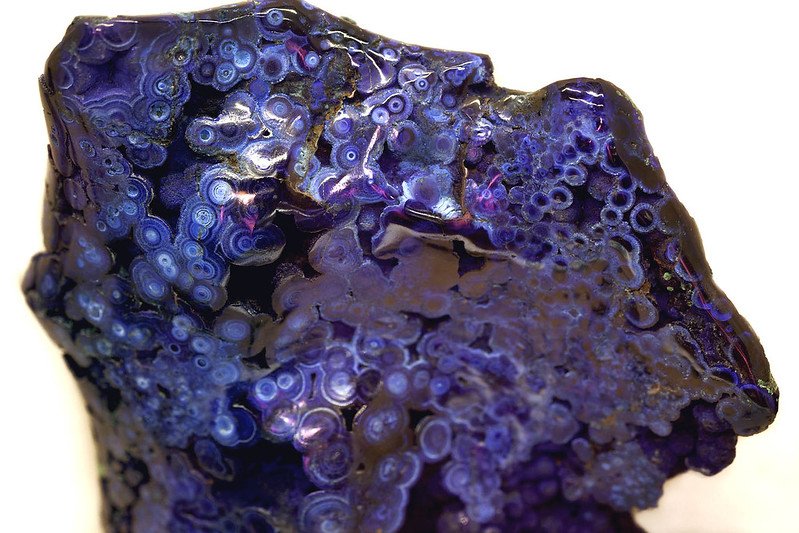
Azurite is relatively rare, but it makes for striking specimens when found. It also occurs in a variety of forms, just adding to the appeal for those of us who collect minerals. Azurite’s place in stone collecting is well cemented at this point, it’s just a matter of which form and how it’s used that defines it.
9. Dumortierite
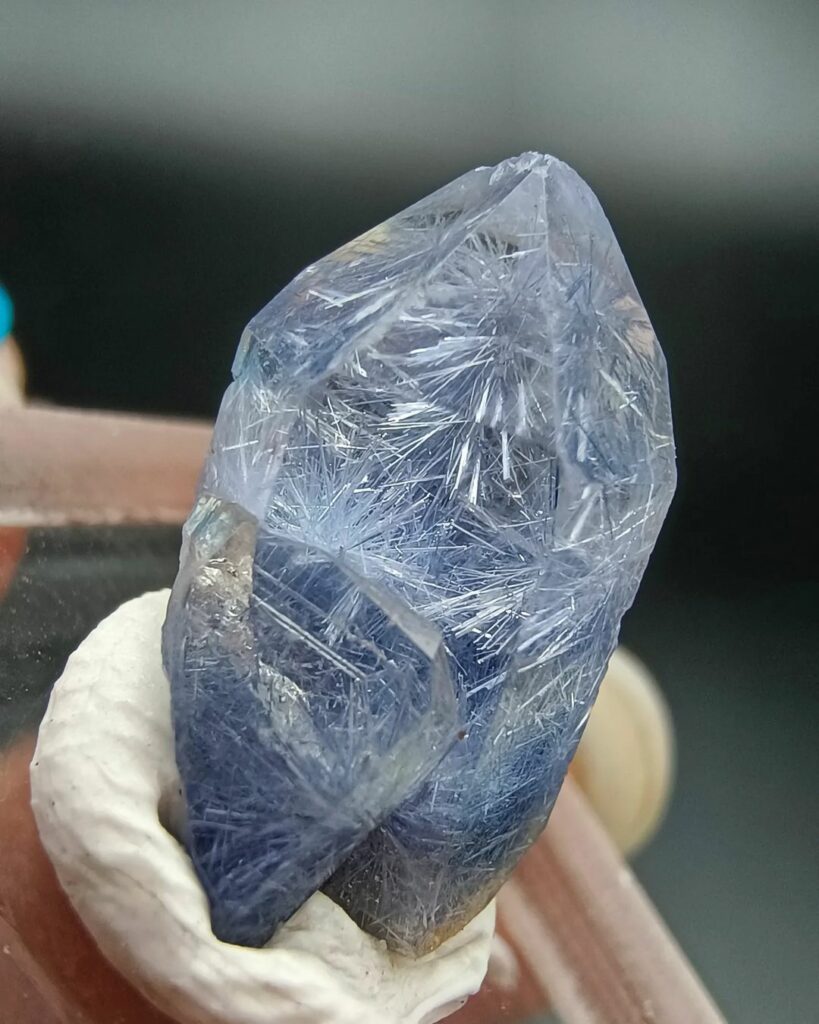
Dumortierite is a strange one. The crystals themselves formed into a few configurations, with the most attractive being long, blue needles. Other times it occurs as masses. The most interesting, in my opinion, is dumortierite quartz. In this configuration, the needles are suspended in quartz, creating an interesting array of blue inclusions in the clear mineral.
In addition to being found alone and in quartz, this stone is sometimes used in place of (or sold as) lapis or sodalite. It’s quite hard, sitting at a solid 7 on the Moh’s scale, and durable overall. As a mineral, it’s also used in the production of porcelain.
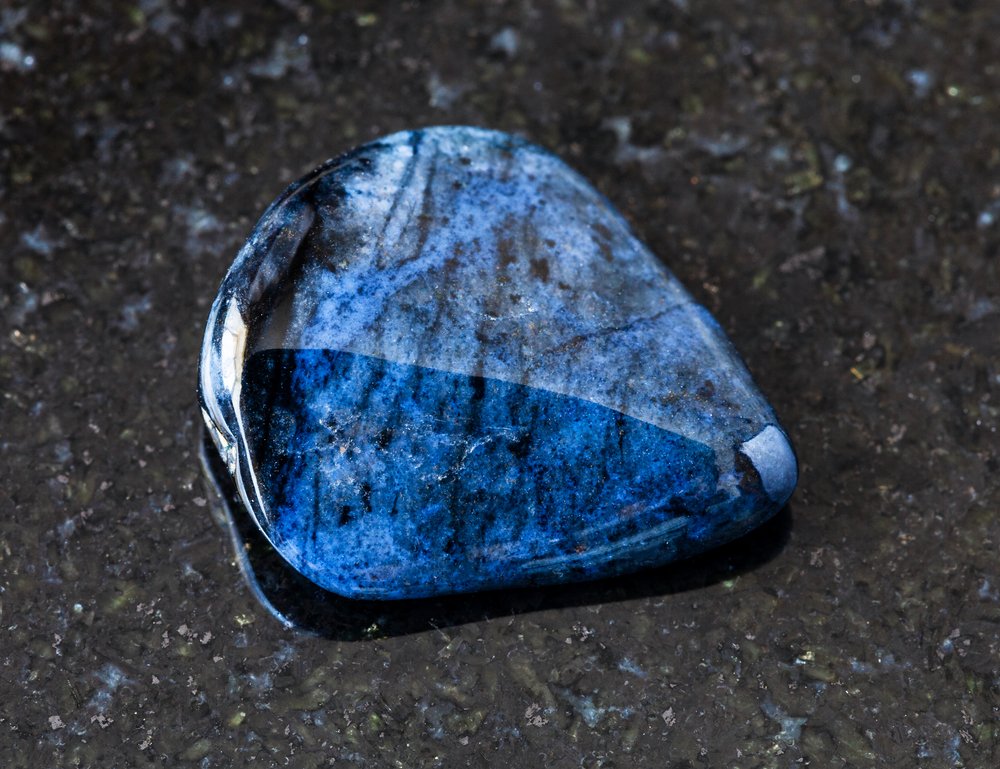
While not at the top of most people’s lists, the unique forms of dumortierite make it a great mineral for collectors to find. Double points if you can locate a good specimen of dumortierite quartz, this little-known mineral has a lot of beauty stashed within.
10. Chrysocolla
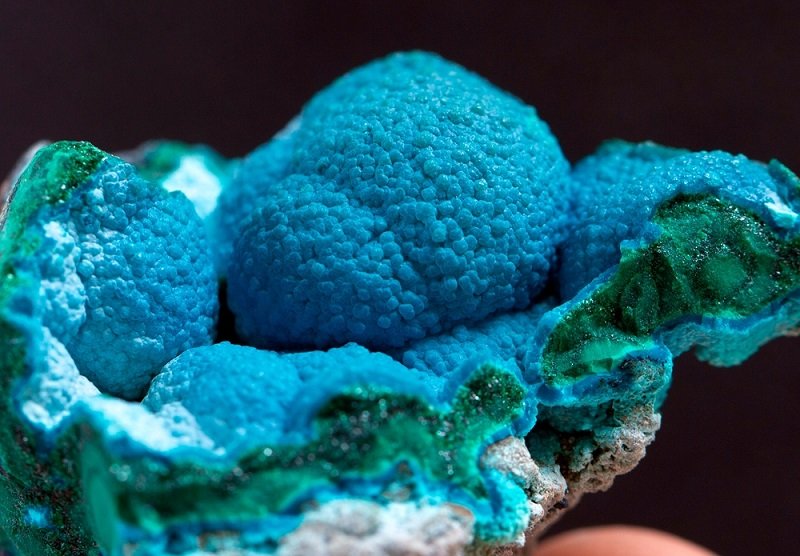
Chrysocolla is another of the blue-green copper minerals that can often be found in abundance. It occurs in a wide range of colors and hardnesses, with the lower grades often being stabilized for use in jewelry. The name itself comes from the original use of ground Chrysocolla: as a soldering component for gold. The name translates roughly to “gold glue.”
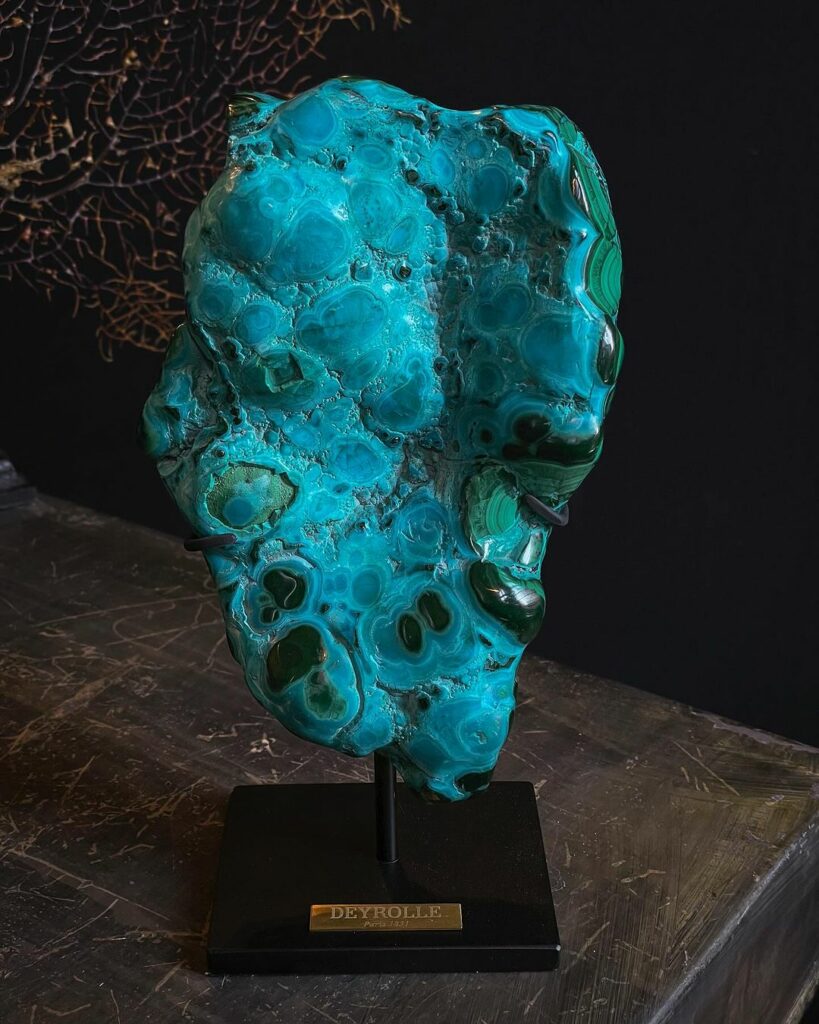
Chrysocolla is often used in place of turquoise in Southwestern-style jewelry. It’s quite similar to turquoise overall but has a greener shade to it as a general rule. There is also extremely high-grade, fully silicified Chrysocolla found on rare occasions, it creates a transparent and light blue gemstone that’s usually called “gem silica.”
It’s found in abundance in many places across the globe, but a lot of it comes from the USA where it’s usually associated with old copper mines. This strange ore is another mineral that’s both beautiful and of use chemically, making it a favorite among collectors since antiquity.
11. Aquamarine
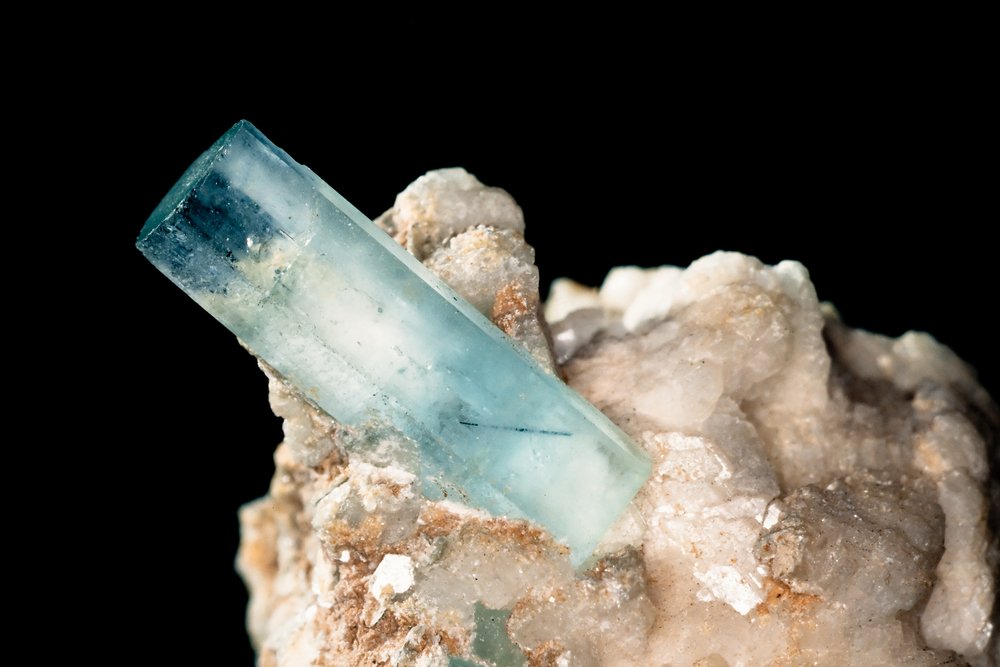
No list of blue gemstones is complete without a mention of the sky-blue beryl known as aquamarine. It’s a major precious gemstone, and the crystals themselves are both gorgeous and hard enough to withstand being an unprotected specimen. Oddly, it’s actually known for clarity unlike emeralds (green beryl) which are actually known for their complex inclusions or jardin.
Aquamarine is middling in price for a gemstone, a bit higher on the scale than blue topaz but not as much as “true” precious gemstones. All aquamarine is a light blue coloration. Dark blue beryl is known as “maxixe” but loses its color with sunlight exposure and most of it is artificially enhanced.
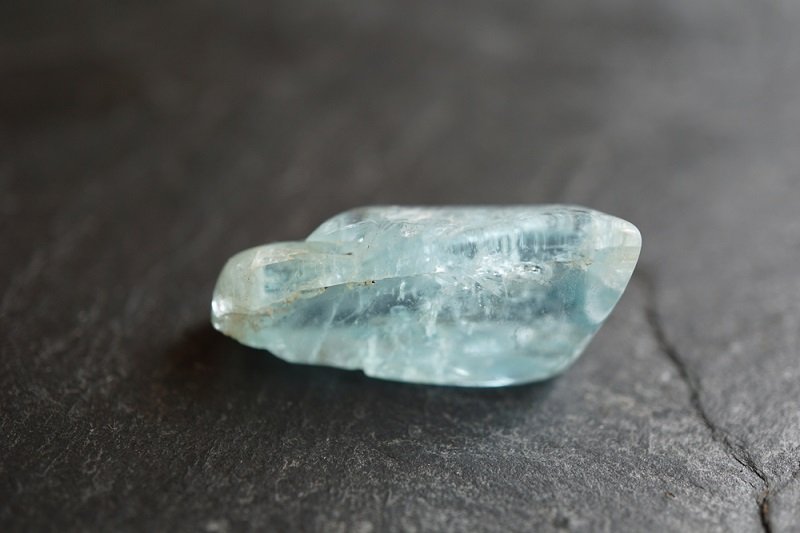
Aquamarine is quite distinctive in color and clarity, making it a favorite for many jewelers. As a member of the beryl family, it’s also quite hard, taking a great polish and working easily (if slowly). It’s among the first options most of us look at when we think of blue gemstones, and it’s a solid choice in more ways than one!
12. Indicolite and Paraiba Tourmaline
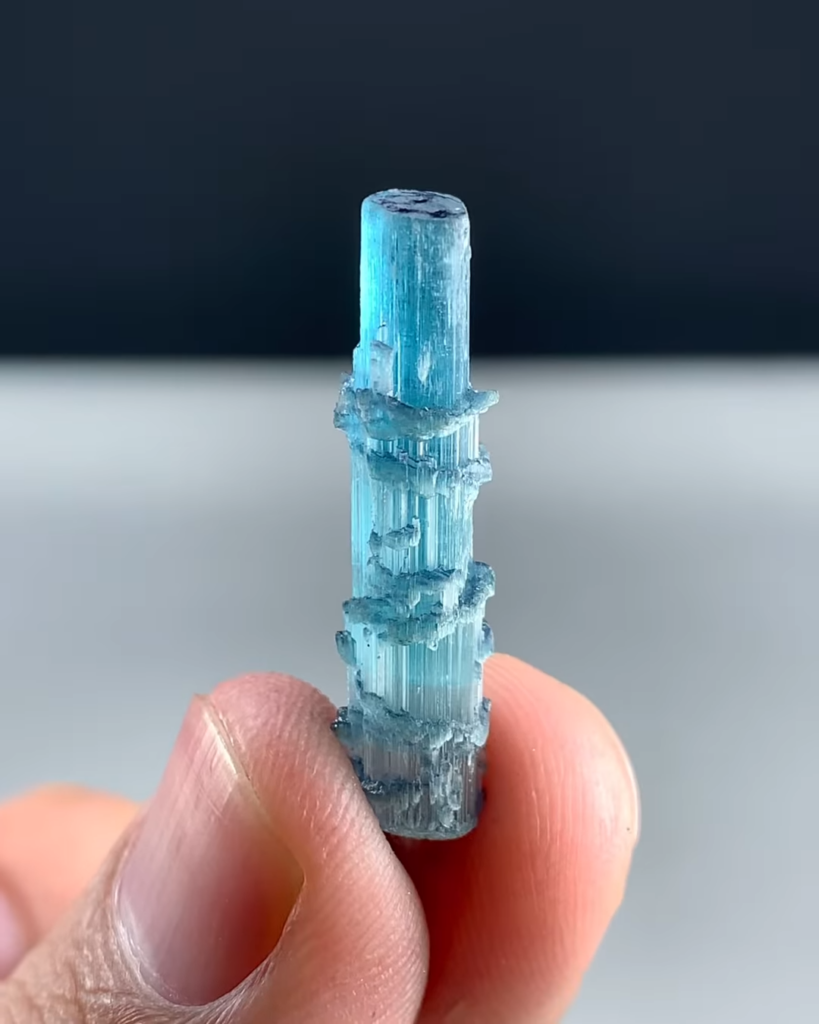
Tourmaline is a gemstone with many colors and many names. The blue varieties are among the rarest, and their pricing can reach incredible levels. Paraiba tourmaline, perhaps the most sought-after of the various types, is a bright blue that’s even more striking than neon apatite at first glance. Indicolite, on the other hand, refers to a deep blue-grey tourmaline.
These stones are very rare and very expensive. Tourmaline is most known for the various greens, oranges, and pinks that come from the majority of crystals, while rare varieties can reach exorbitant prices. Other rare varieties of tourmaline with extra value include the deep-red rubilite and the emerald-colored chrome tourmaline.
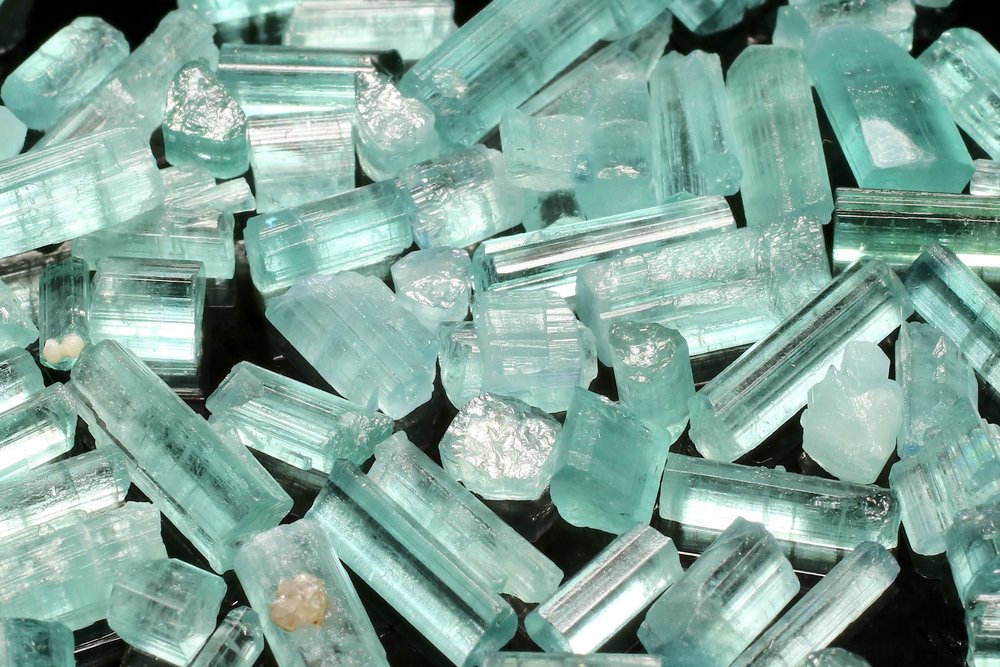
These stones are rare as both gemstones and specimens, and they often become prized stones for the collectors who find them. Their suitability for jewelry and unique place in the world of tourmaline gemstones has earned them their place in the hall of fame for blue gemstones.
13. Chalcanthite
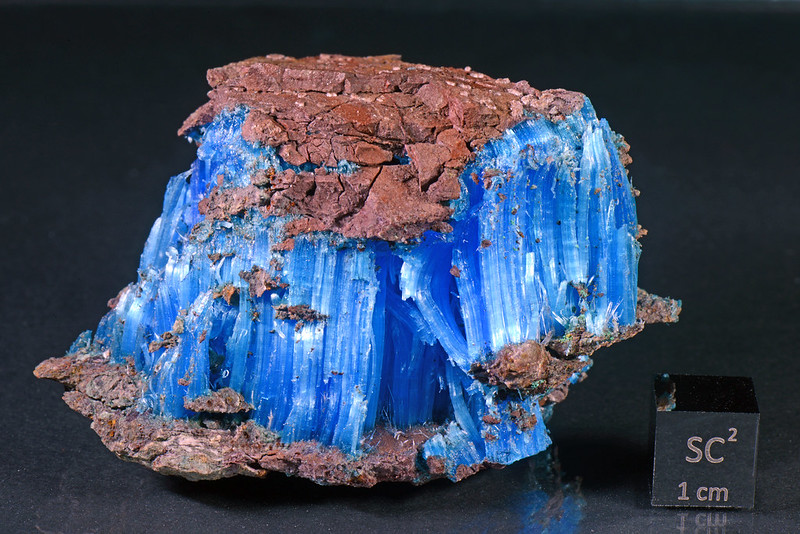
Chalcanthite is a crystallized form of copper sulfate, forming deep blue crystals on surfaces in mines and other places raw copper can be found. It’s actually water-soluble, and in some regions, it continuously dissolves and reforms on the walls of mines and caverns. For that reason, large specimens can only be found in very arid regions.
This water solubility also makes it hard to acquire as a collector’s mineral. It has to be stored properly to keep it from dissolving air’s moisture content over time, and even casual contact can damage the crystals. This would, at first glance, make it an incredible collector’s mineral but high-quality crystals can easily be grown at home which makes the market even more complicated.
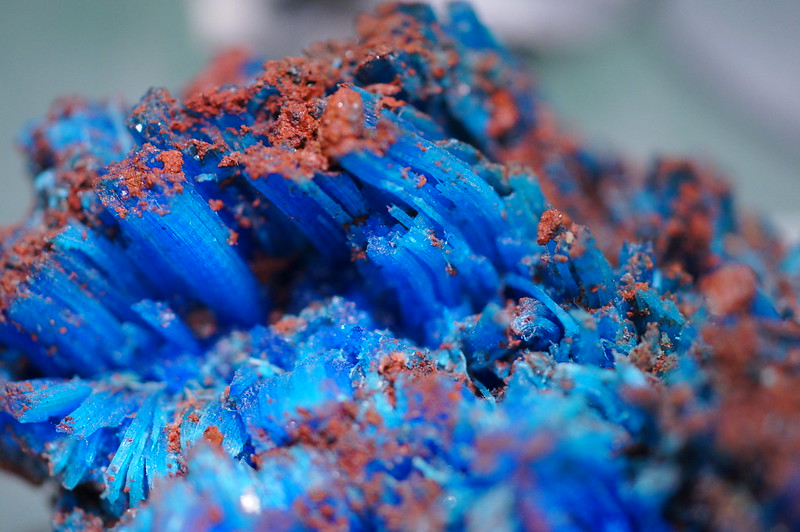
Still, the striking blue of this fragile mineral is hard to beat. It matches the best and its unique provenance can make a natural piece a true wonder to behold. You just have to be aware of how to store it and have the ability to avoid man-made crystals, otherwise, you’ll simply lose it to air over time.
15. Shattuckite
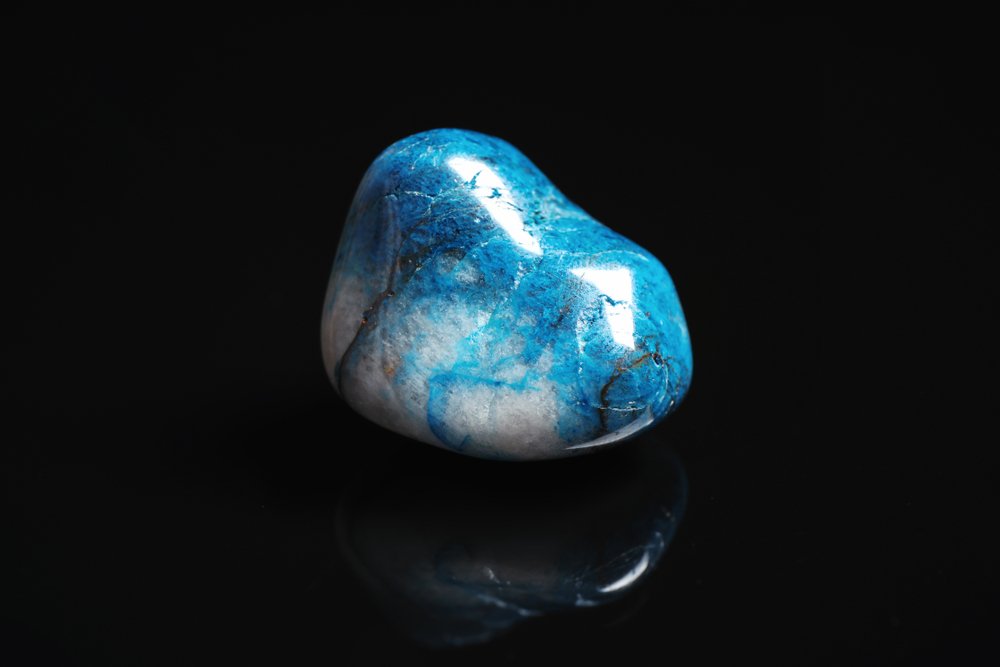
Shattuckite is another of the various copper-bearing minerals that have earned a place in our little collection of blue stones. This one primarily forms as soft crystals and in the place where it takes its name, the Shattuck Mine, it also forms pseudomorphs behind malachite.
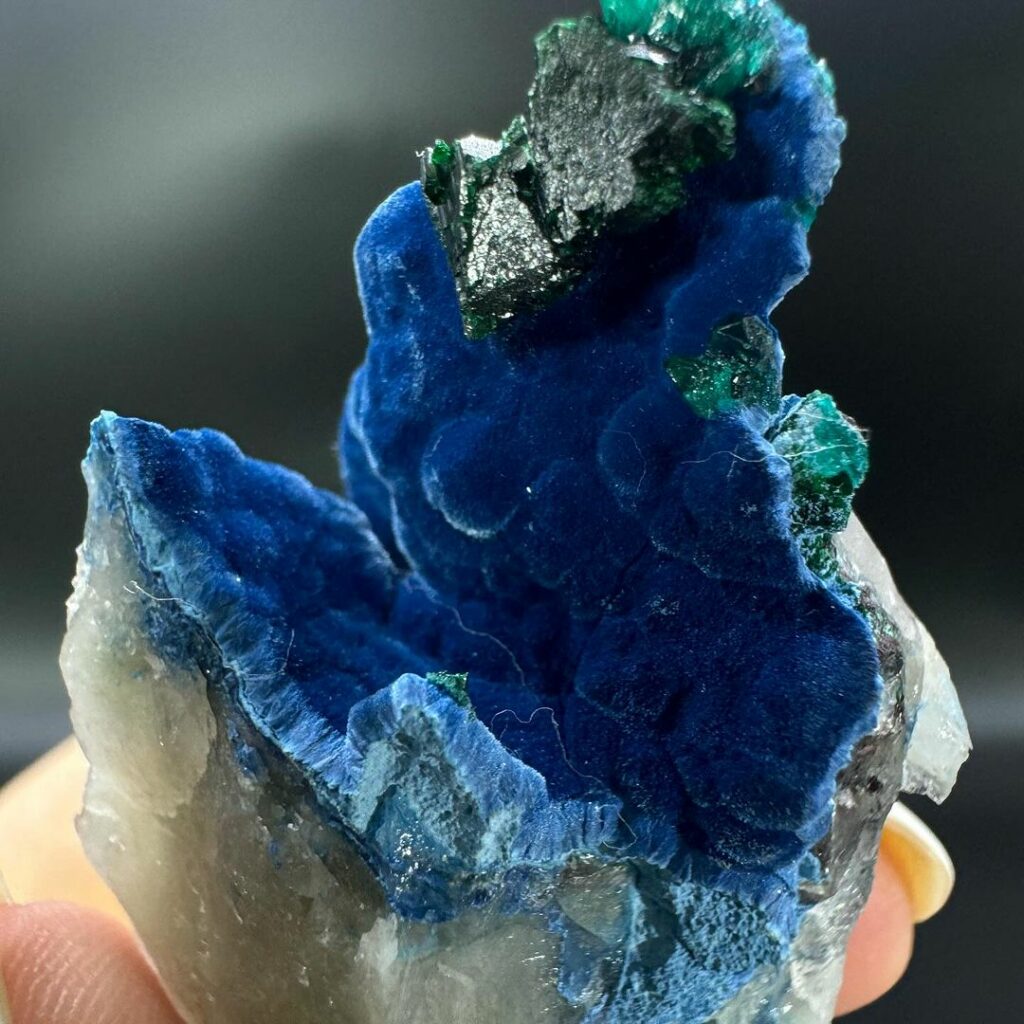
Shattuckite is a strange mineral. It’s hard to determine it through just normal properties due to the complex way it mixes with other stones. For instance, the majority of shattuckite has some amount of quartz included… which will really screw up your identification chances if you’re performing a hardness test.
For even more fun, it’s easily confused with yet another blue copper ore known as plancheite. There’s no common way for the home collector to tell which they have other than an educated guess. Still, the deep blue of Shattuckite is incredible in person and it’s worth tracking down a sample of this rare crystal for your collection.
- Online rock and mineral club for collectors of all levels!
- Find community with like-minded rock and mineral enthusiasts.
- Monthly Giveaways!
- Free Access to Entire Digital Library of Products (annual memberships)

